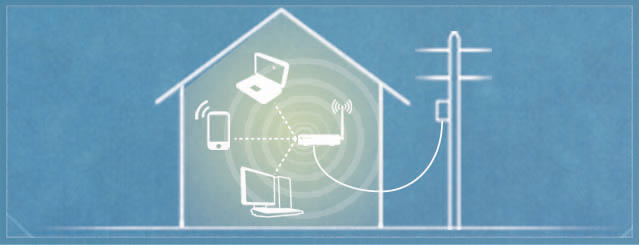
Are Electromagnetic Fields Dangerous?
Written By: Dr. Adam McLeod, ND, BSc (Hons)
For those of us who live in the city, we are constantly surrounded by electromagnetic fields. This is simply unavoidable in modern society yet this is a recent change. We are exposed to substantially more electromagnetic radiation than our ancestors. In fact, most of us are completely surrounded by these electromagnetic fields 24 hours a day, seven days a week. The obvious question is, are these electromagnetic fields safe to be around?
There is a common belief in the general population that powerful magnetic fields do not affect living organisms. Perhaps this originates from movies such as Terminator where robots shut down in the presence of these fields while humans seem unaffected. Although the effects may not be as dramatic as a machine interacting with these fields, living organisms are most certainly effected by electromagnetic fields. When you take the time to break down what electromagnetic fields are and how cells interact with them, the reasons are obvious.
What is an electromagnetic field? An electromagnetic field is a physical field produced by electrically charged objects. It extends indefinitely through space and affects the behaviour of charged objects in the vicinity of the field. The chemistry that drives life is dependent on subtle interactions between charged particles. For example, it is the distribution of charged amino acids in a protein that ultimately determine the structure and function of that protein. Your brain functions by creating a distinct yet delicate distribution of charged ions. This is how a nerve impulse moves through your body. These subtle interactions are critical for all living organisms.
It is clear that these fields will influence the biochemistry of any living organism but the implications of this interaction are poorly understood. There is some evidence to suggest that electromagnetic fields are dangerous. In one large Norwegian study, electrical workers with 10 or more years of working experience were 41% more likely to develop leukemia and brain tumours1. A different study indicated that there is a connection between exposure to electromagnetic fields and the development of male breast cancer2. Although numerous studies indicate a connection between cancer and electromagnetic fields, there is still some controversy about how significant this interaction is3.
When I was a teenager my mother was diagnosed with a brain tumour. Thankfully it was successfully removed surgically with no major complications. After the surgery my mother always proclaimed that there was a connection between cell phone use and her tumour. She was suddenly more sensitive to the radiation from a cell phone and she could not even talk on a cell phone unless she put it on speaker phone. At the time there was no evidence to support this connection, but there is now an abundance of evidence that supports a connection between regular cell phone use and the development of brain tumours4,5,6,7. Perhaps what is most convincing about this data is that there is a consistent pattern of association between mobile phone use and ipsilateral glioma and acoustic neuroma. In other words, these people are consistently developing tumours on the same side of their head that they hold their cell phone.
As I was writing this it forced me to look at my own habits and reassess my own exposure to electromagnetic fields. I am constantly surrounded by computers, laptops and cell phones. This is unavoidable for those of us who work in the city and the reality is that I am not prepared to eliminate these items from my life, not yet at least. I have however made several small changes in my life when it comes to electronic devices. Whenever I sit down at a table I will always take my phone out of my pocket and put it on the table. I also make en effort to put my phone on airplane mode whenever possible. When sleeping I always make sure that my phone is as far away from me as possible (ie on the other side of the room rather than beside my bed). These are small changes but I believe that they will significantly reduce my exposure to electromagnetic fields.
The purpose of this article was not to scare people about every electronic device or encourage people to hide from cities. It is important that as a society we become aware that we do not fully understand the significance of how these fields influence our health and that they may be dangerous. Perhaps by recognizing this interaction we can one day make changes as a society to reduce our exposure to these fields.
Dr. Adam McLeod is a Naturopathic Doctor (ND), BSc. (Hon) Molecular biology, Motivational Speaker and International Best Selling Author. He currently practices at his clinic in Vancouver, British Columbia where he focuses on integrative cancer care. https://www.yaletownnaturopathic.com
References:
1) Tynes, Tore, Aage Andersen, and FrØydis Langmark. “Incidence of cancer in Norwegian workers potentially exposed to electromagnetic fields.” American Journal of Epidemiology 136.1 (1992): 81-88.
2) Demers, Paul A., et al. “Occupational exposure to electromagnetic fields and breast cancer in men.” American Journal of Epidemiology 134.4 (1991): 340-347.
3) Heynick, Louis N., Sheila A. Johnston, and Patrick A. Mason. “Radio frequency electromagnetic fields: cancer, mutagenesis, and genotoxicity.” Bioelectromagnetics 24.S6 (2003): S74-S100.
4) Khurana, Vini G., et al. “Cell phones and brain tumors: a review including the long-term epidemiologic data.” Surgical neurology 72.3 (2009): 205-214.
5) Hardell, Lennart, et al. “Long-term use of cellular phones and brain tumours: increased risk associated with use for⩾ 10 years.” Occupational and Environmental Medicine 64.9 (2007): 626-632.
6) Hardell, Lennart, et al. “Cellular and cordless telephones and the risk for brain tumours.” European Journal of Cancer Prevention 11.4 (2002): 377-386.
7) Hardell, Lennart, et al. “Meta-analysis of long-term mobile phone use and the association with brain tumours.” International journal of oncology 32.5 (2008): 1097-1103.






Leave a Reply
You must be logged in to post a comment.